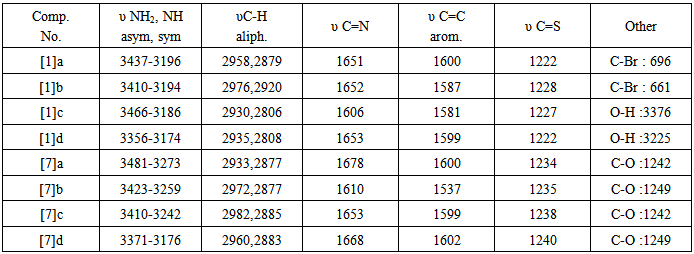

Again, there is no trough due to the O-H bond, and again there is a marked absorption at about 1700 cm -1 due to the C=O.Ĭonfusingly, there are also absorptions which look as if they might be due to C-O single bonds - which, of course, aren't present in propanone. You will find that this is very similar to the infra-red spectrum for ethyl ethanoate, an ester. Some tables of data fine it down, so that they will tell you that an absorption from 1230 - 1250 is the C-O bond in an ethanoate. Whether or not you could pick that out would depend on the detail given by the table of data which you get in your exam, because C-O single bonds vary anywhere between 10 cm -1 depending on what sort of compound they are in. The C-O single bond is the absorption at about 1240 cm -1. The presence of the C=O double bond is seen at about 1740 cm -1. Don't confuse it with the C-H trough fractionally less than 3000 cm -1. This time the O-H absorption is missing completely. Notice the absorption due to the C-H bonds just under 3000 cm -1, and also the troughs between 10 cm -1 - one of which will be due to the C-O bond. All the infra-red spectra on this page are from liquids - so that possibility will never apply. In fact this absorption would be at a higher number still if the alcohol isn't hydrogen bonded - for example, in the gas state. The O-H bond in an alcohol absorbs at a higher wavenumber than it does in an acid - somewhere between 3230 - 3550 cm -1.

It is possible that small errors may have been introduced during the process of converting them for use on this site, but these won't affect the argument in any way. Note: The infra-red spectra on this page have been produced from graphs taken from the Spectral Data Base System for Organic Compounds ( SDBS) at the National Institute of Materials and Chemical Research in Japan. You couldn't be sure that this trough wasn't caused by something else. The possible absorption due to the C-O single bond is queried because it lies in the fingerprint region. The infra-red spectrum for ethanoic acid looks like this: You will always be given this data in an A'level exam. Note: You will never have to remember where these absorptions occur. It is easily recognised in an acid because it produces a very broad trough in the range 2500 - 3300 cm -1. This absorbs differently depending on its environment. The other really useful bond is the O-H bond. Its position varies slightly depending on what sort of compound it is in. The carbon-oxygen double bond, C=O, is one of the really useful absorptions, found in the range 1680 - 1750 cm -1. Because that bond is present in most organic compounds, that's not terribly useful! What it means is that you can ignore a trough just under 3000 cm -1, because that is probably just due to C-H bonds. The C-H bond (where the hydrogen is attached to a carbon which is singly-bonded to everything else) absorbs somewhere in the range from 2853 - 2962 cm -1. The other bonds in ethanoic acid have easily recognised absorptions outside the fingerprint region. Note: If you aren't sure what the fingerprint region is, follow this link before you go on. You have to be very wary about picking out a particular trough as being due to a C-O bond. The carbon-oxygen single bond also has an absorbtion in the fingerprint region, varying between 10 cm -1 depending on the molecule it is in. The carbon-carbon bond has absorptions which occur over a wide range of wavenumbers in the fingerprint region - that makes it very difficult to pick out on an infra-red spectrum. You will see that it contains the following bonds: The infra-red spectrum for a simple carboxylic acid If you haven't already done so, you should read that page before you go on. Note: This page follows directly on from the introductory page on infra-red spectra.
#Ir interpretation chart how to
This page explains how to use an infra-red spectrum to identify the presence of a few simple bonds in organic compounds.


 0 kommentar(er)
0 kommentar(er)
